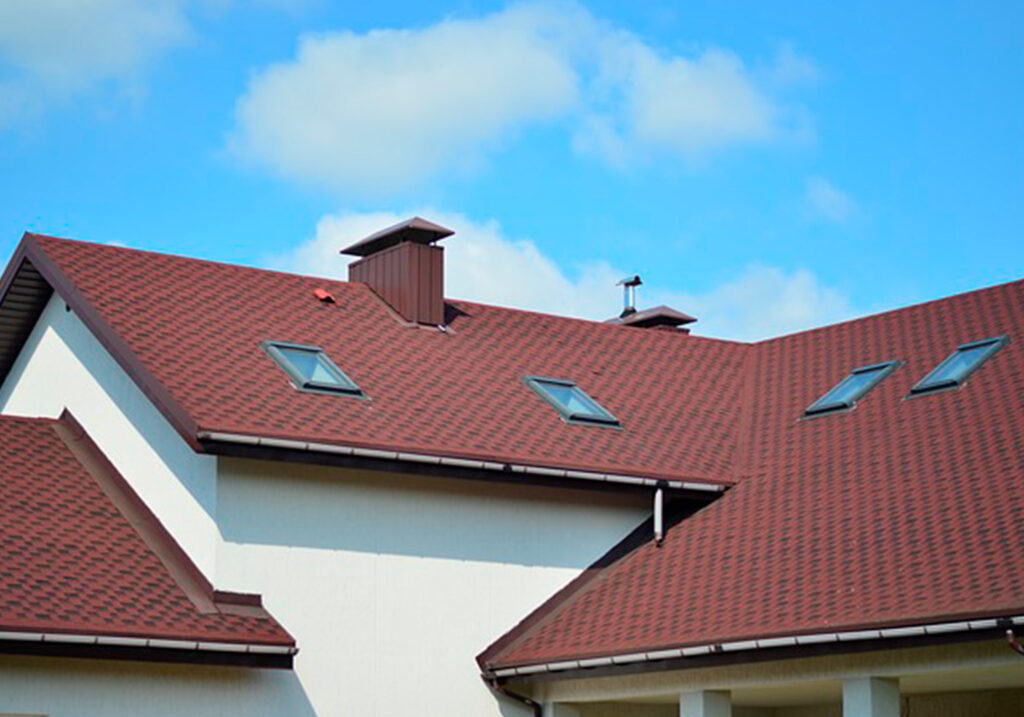When choosing a metal barn, the roof style is one of the most critical decisions to make. But why is this important?
The roof not only determines the aesthetic appeal of the barn but also influences its durability, weather resistance, and maintenance requirements.
Two of the most popular metal barn roof styles are horizontal roofs and vertical roofs. Each has its unique benefits and drawbacks, making it essential to understand the differences before making a choice.
In this article, the experts at Lion Barns will explore the characteristics of both horizontal and vertical roof styles, their advantages and disadvantages, and factors to consider when selecting the right one for your needs.
Understanding Horizontal Roofs
A horizontal roof, also known as a boxed-eave or regular roof, features metal panels that run parallel to the ground. This style is commonly found in traditional metal barns and carports, offering a simple yet effective design. Horizontal roofs are constructed with steel panels that are placed side by side, running from one side of the barn to the other, rather than from the ridge to the eaves.
One of the primary reasons people opt for a horizontal roof is its affordability. Because it requires fewer structural components and less labor to install, horizontal roofs are often more budget-friendly than vertical ones. Additionally, the straightforward installation process makes them an excellent option for those looking for a quick and cost-effective barn structure.
However, while horizontal roofs are practical for many applications, they do come with some limitations. Their design makes it easier for water, snow, and debris to accumulate on the surface, particularly in areas with heavy rainfall or snowfall. This accumulation can lead to long-term structural issues if not regularly maintained.
Advantages of Horizontal Roofs
Despite some limitations, horizontal roofs have several advantages that make them a popular choice for many barn owners. The cost-effectiveness of this roof style is its most significant advantage. Because it uses fewer materials and requires less labor, it is an excellent option for those working within a tight budget.
Another benefit of horizontal roofs is their traditional appearance. Many people prefer the classic look of a horizontal metal barn, especially for agricultural and residential settings. The design blends seamlessly with many existing structures, making it an aesthetically pleasing choice.
Lastly, horizontal roofs are easier and quicker to install. If time is a crucial factor in your barn construction, opting for a horizontal roof can help expedite the process. The installation requires fewer components, and the panels can be quickly secured in place.
Disadvantages of Horizontal Roofs
While horizontal roofs have notable benefits, they also come with some disadvantages. The most significant issue is their limited drainage capabilities. Because the panels run parallel to the ground, rainwater and snow do not slide off as efficiently as they do on vertical roofs. This can lead to water pooling, corrosion, and potential leaks over time.
Another drawback is their lower durability in extreme weather conditions. Horizontal roofs may not be the best choice for areas prone to heavy snow or strong winds. Without adequate drainage, excessive weight from accumulated snow can put stress on the roof structure, increasing the risk of damage or collapse.
Lastly, horizontal roofs require more maintenance compared to vertical roofs. Regular cleaning and debris removal are necessary to prevent clogs and prolong the roof’s lifespan. Without proper upkeep, the risk of rust and deterioration increases significantly.
Understanding Vertical Roofs
A vertical roof differs from a horizontal roof in that its metal panels are installed perpendicularly, running from the ridge to the eaves. This design allows water, snow, and debris to slide off more easily, reducing maintenance concerns and prolonging the structure’s lifespan.
Vertical roofs are designed with additional framing components, including hat channels that reinforce the structure. These reinforcements enhance the barn’s strength, making it more resilient in extreme weather conditions such as heavy snow, strong winds, and heavy rainfall.
While vertical roofs tend to be more expensive than horizontal roofs, their superior durability and low maintenance requirements make them a worthwhile investment for many barn owners. The added upfront cost is often offset by reduced repair and replacement expenses over time.
Advantages of Vertical Roofs
One of the primary benefits of a vertical roof is its excellent drainage system. Because the panels run vertically, rainwater and snow easily slide off the surface, preventing water accumulation. This feature is particularly important in regions that experience heavy precipitation or frequent storms.
Another advantage is increased structural strength. Vertical roofs have additional reinforcements that enhance the overall durability of the barn. This makes them ideal for areas prone to severe weather conditions, ensuring long-term reliability and safety.
Additionally, vertical roofs are low-maintenance. Unlike horizontal roofs, which require frequent cleaning to prevent debris buildup, vertical roofs naturally shed dirt and leaves, reducing the need for regular maintenance. This feature makes them an excellent choice for barn owners looking for a hassle-free roofing solution.
Disadvantages of Vertical Roofs
Despite their many advantages, vertical roofs do have a few downsides. The most significant drawback is their higher initial cost. Because vertical roofs require more materials and additional structural support, they are more expensive than horizontal roofs. However, many barn owners find that the long-term benefits outweigh the initial investment.
Another disadvantage is the longer installation time. Due to the additional components required for vertical roofs, the installation process is more complex and time-consuming. While this may not be a major concern for some, those looking for a quick construction process may prefer the simplicity of a horizontal roof.
Lastly, vertical roofs may not be necessary for all climates. If you live in an area with mild weather conditions and minimal precipitation, the additional cost of a vertical roof may not be justifiable. In such cases, a horizontal roof may be a more practical and cost-effective choice.
Choosing the Right Roof Style for Your Metal Barn
Selecting between a horizontal and vertical roof ultimately depends on several factors, including budget, climate, and intended use. If affordability and quick installation are your top priorities, a horizontal roof may be the best choice. However, if you live in an area with heavy rainfall or snow, investing in a vertical roof can provide greater durability and long-term protection.
Consider the amount of maintenance you are willing to perform. If you prefer a low-maintenance solution, a vertical roof is the better option due to its efficient drainage system. On the other hand, if you are comfortable with occasional upkeep and live in a moderate climate, a horizontal roof can still provide reliable performance.
Additionally, factor in the overall longevity of the structure. While vertical roofs have a higher upfront cost, their durability and reduced maintenance needs can save you money in the long run. If you are looking for a long-term investment, a vertical roof is a wise choice.
Conclusion
Both horizontal and vertical roofs offer unique benefits and challenges. Horizontal roofs provide affordability and a traditional aesthetic, making them suitable for budget-conscious buyers and moderate climates. Meanwhile, vertical roofs offer superior drainage, enhanced durability, and lower maintenance, making them ideal for harsh weather conditions.
When deciding which roof style is best for your metal barn, consider factors such as climate, maintenance preferences, and budget. By weighing the advantages and disadvantages of each option, you can make an informed decision that ensures the longevity and functionality of your metal barn for years to come.

